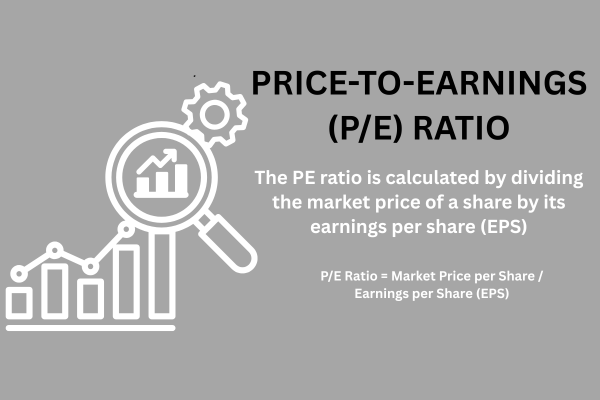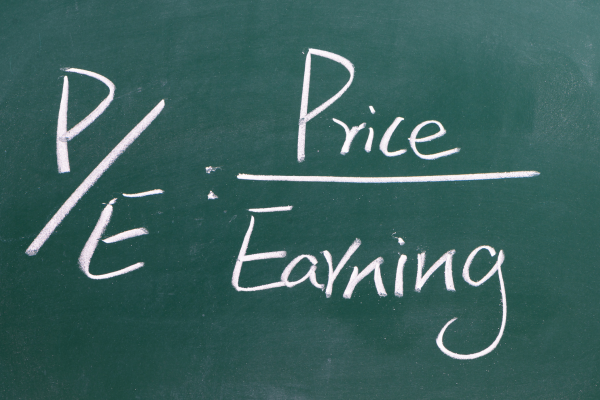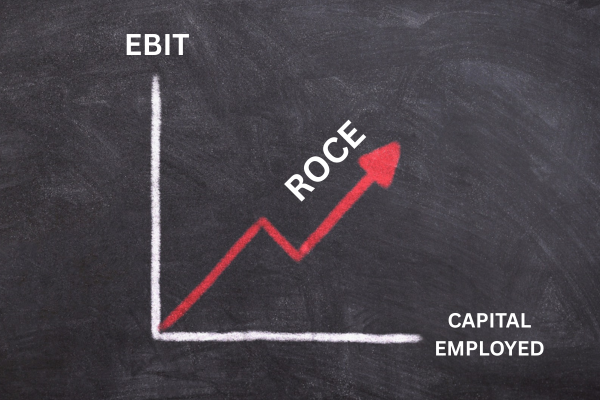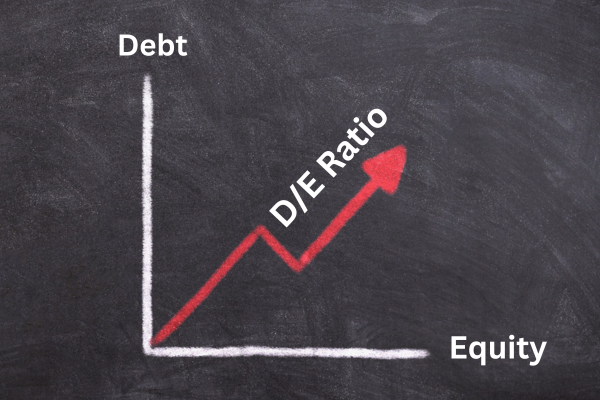PE Ratio is a vital financial metric that every investor should understand. It’s one of the simplest yet most powerful tools for evaluating a company’s stock price relative to its earnings. Whether you are a beginner investor or someone looking to refine your investment strategies, mastering the PE Ratio calculation can help you make more informed investment decisions. In this comprehensive guide, we will walk you through the step-by-step process of calculating the PE Ratio, explain its significance, and show you how to apply it effectively in your investment decisions.
Table of Contents
What is PE Ratio?
The PE Ratio, also known as the Price-to-Earnings ratio, is a valuation measure that compares a company’s current share price to its per-share earnings (EPS). In simpler terms, it shows how much investors are willing to pay for each rupee of the company’s earnings.
The formula to calculate the PE Ratio is:
PE Ratio = Market Price per Share / Earnings per Share (EPS)
The PE Ratio is a widely used indicator to gauge whether a stock is overvalued or undervalued. A high PE Ratio often indicates that investors expect high future growth, while a low PE Ratio may signal that the stock is undervalued or the company is experiencing difficulties.
Understanding how to calculate the PE Ratio allows investors to evaluate stocks, compare them with industry peers, and determine if a stock is worth investing in.
Step 1: Gather the Necessary Information
Before you can calculate the PE Ratio, you need to gather the following key information:
- Market Price per Share: This is the current trading price of one share of the stock.
- Earnings per Share (EPS): This refers to the portion of a company’s profit allocated to each outstanding share of common stock. EPS can typically be found in a company’s financial statements, specifically the income statement, or you can look up the EPS in stock analysis platforms or financial websites.
You can find the market price per share on any stock exchange platform, while EPS is generally available in the company’s annual report.
Step 2: Use the Formula for PE Ratio Calculation
Once you have the necessary information, you can now proceed with the formula for calculating the PE Ratio.

- Formula: PE Ratio = Market Price per Share / Earnings per Share (EPS)
For example, let’s assume that a company’s stock is trading at ₹500 per share, and the EPS for that company is ₹25.
PE Ratio = ₹500 / ₹25 = 20
This means that the PE Ratio of this stock is 20, meaning investors are willing to pay ₹20 for every ₹1 of the company’s earnings.
Step 3: Analyze the PE Ratio
Once you’ve calculated the PE Ratio, it’s time to analyze its meaning. A PE Ratio alone does not tell you much unless you put it into context. Here are some guidelines to help you interpret the PE Ratio:
- High PE Ratio
- A high PE Ratio often indicates that the stock is overvalued or that investors are expecting high future growth. High-growth companies, like those in the technology sector, tend to have higher PE Ratios.
- A high PE Ratio often indicates that the stock is overvalued or that investors are expecting high future growth. High-growth companies, like those in the technology sector, tend to have higher PE Ratios.
- Low PE Ratio
- A low PE Ratio can signal that a stock is undervalued or that the company is facing challenges. It could also indicate a stable or slow-growing company. However, be cautious, as an extremely low PE Ratio could also suggest financial trouble.
- A low PE Ratio can signal that a stock is undervalued or that the company is facing challenges. It could also indicate a stable or slow-growing company. However, be cautious, as an extremely low PE Ratio could also suggest financial trouble.
- Comparison to Industry Average
- Compare the PE Ratio of the stock to the average PE Ratio of other companies in the same industry. A stock with a significantly higher or lower PE Ratio than its peers may warrant further investigation.
- Compare the PE Ratio of the stock to the average PE Ratio of other companies in the same industry. A stock with a significantly higher or lower PE Ratio than its peers may warrant further investigation.
- Historical Comparison
- Compare the current PE Ratio to the historical PE Ratio of the same company. A sudden change in the PE Ratio could indicate a shift in the company’s growth potential or financial health.
Step 4: Types of PE Ratios
There are different types of PE Ratios that you should be aware of to make better investment decisions:
- Trailing PE Ratio
- The trailing PE Ratio is based on the company’s earnings over the past 12 months (TTM). This is the most common PE Ratio used in the market and is usually the easiest to calculate, as the earnings data is already available.
- The trailing PE Ratio is based on the company’s earnings over the past 12 months (TTM). This is the most common PE Ratio used in the market and is usually the easiest to calculate, as the earnings data is already available.
- Forward PE Ratio
- The forward PE Ratio is based on future earnings estimates. Analysts use projected earnings for the upcoming 12 months to calculate this ratio. This type of PE Ratio is often used for growth stocks and can provide insight into future expectations.
- The forward PE Ratio is based on future earnings estimates. Analysts use projected earnings for the upcoming 12 months to calculate this ratio. This type of PE Ratio is often used for growth stocks and can provide insight into future expectations.
- Shiller PE Ratio (Cyclically Adjusted PE or CAPE Ratio)
- The Shiller PE Ratio takes the average inflation-adjusted earnings of a company over the past 10 years. It smooths out earnings over time, making it useful for assessing long-term market trends.
Each type of PE Ratio provides different insights, and investors should use the appropriate one depending on their investment goals and strategy.
Step 5: Limitations of PE Ratio
While the PE Ratio is a useful tool, it has certain limitations that you should be aware of:
- It Doesn’t Consider Debt: A high PE Ratio might seem attractive, but it doesn’t account for the company’s debt. A company with significant debt may have a high PE Ratio but face financial difficulties.
- Doesn’t Reflect Growth: The PE Ratio does not provide insight into the company’s future growth. For this reason, it’s important to use the PE Ratio alongside other metrics like the Price-to-Book (P/B) ratio, Debt-to-Equity ratio, and growth projections.
- Not Useful for Non-Profit Companies: The PE Ratio becomes irrelevant for companies that are not profitable or have negative earnings. For these companies, other valuation metrics should be considered.
- Industry and Market Conditions: The PE Ratio is often affected by market conditions and industry-specific trends. A high PE Ratio in one industry might be normal, but in another, it might indicate overvaluation.
Step 6: How to Use PE Ratio in Smart Investing
When used correctly, the PE Ratio is a valuable tool in your investment toolbox. Here’s how to incorporate it into your investment strategy:

- Valuation Comparison: Use the PE Ratio to compare stocks within the same industry or sector to identify undervalued or overvalued stocks.
- Assess Growth Potential: For growth stocks, a higher PE Ratio may be justified due to future growth potential. On the other hand, value stocks may have lower PE Ratios but stable earnings and dividends.
- Monitor Changes: Track changes in the PE Ratio over time to spot trends or any shifts in a company’s earnings outlook.
- Consider Other Metrics: Don’t rely solely on the PE Ratio. Combine it with other financial metrics, such as Return on Equity (ROE), earnings growth rates, and debt ratios, for a more complete analysis.
The PE Ratio is a powerful and simple tool for evaluating the valuation of a stock, but it should always be used in conjunction with other metrics and analysis. By following this step-by-step guide, you can calculate the PE Ratio, interpret its meaning, and use it to make smarter, more informed investment decisions. Remember that a well-rounded investment strategy involves looking at various factors and continuously evaluating your portfolio for the best opportunities.
By understanding how to calculate the PE Ratio and applying it correctly, you’ll be better equipped to assess stocks and make smart investments that align with your financial goals.
Frequently Asked Questions (FAQs)
Q1: What PE ratio is a good buy?
A good PE (Price-to-Earnings) ratio for a stock typically depends on the industry and market conditions, but here are some general guidelines:
General Benchmark:
- PE Ratio between 10–15 is often considered attractive for value investing.
- Below 10 may indicate undervaluation, but it could also signal risk or poor future growth.
- 15–25 is usually seen in stable, growing companies.
- Above 25 can suggest high growth expectations—or overvaluation.
Q2: Is having a high PE ratio good or bad?
A high PE ratio can be good if it reflects strong future growth expectations and investor confidence. It often indicates that the market anticipates higher earnings ahead. However, it can also suggest overvaluation, so investors should analyze fundamentals and compare with industry peers before considering it a positive sign.
Q3: How to find nifty PE ratio?
To find the Nifty PE Ratio, visit the official NSE India website. Navigate to the “Market Data” section and select “Equity Stock Watch” or “Nifty 50.” The current PE Ratio is listed alongside the index data, updated daily based on market movements and earnings.





